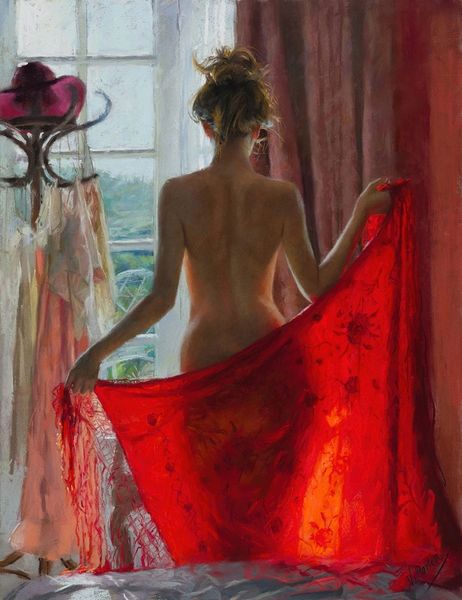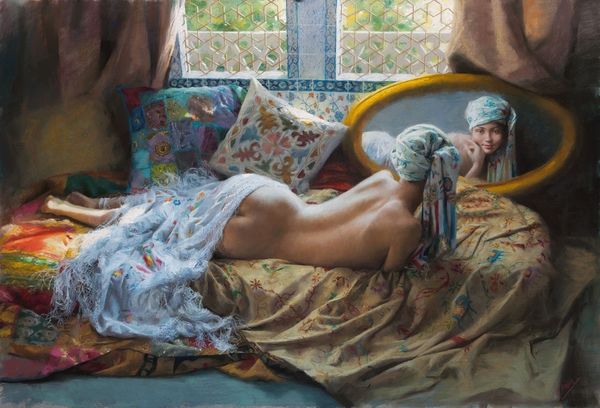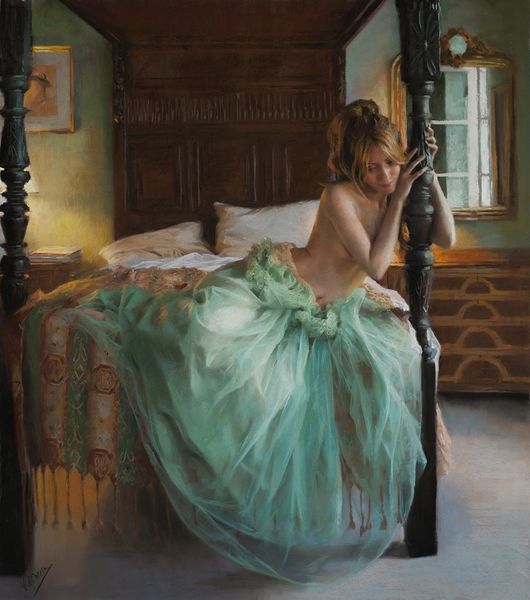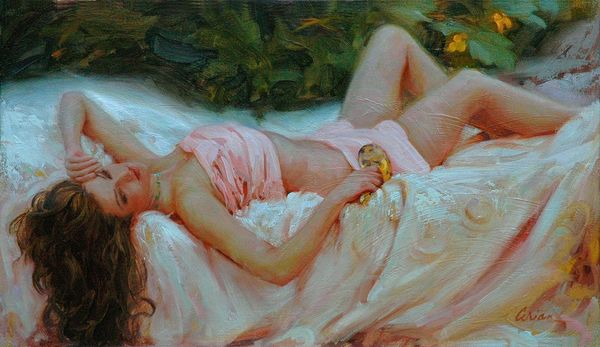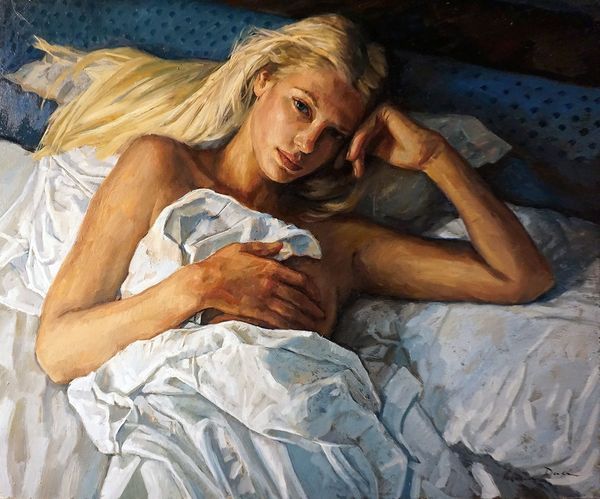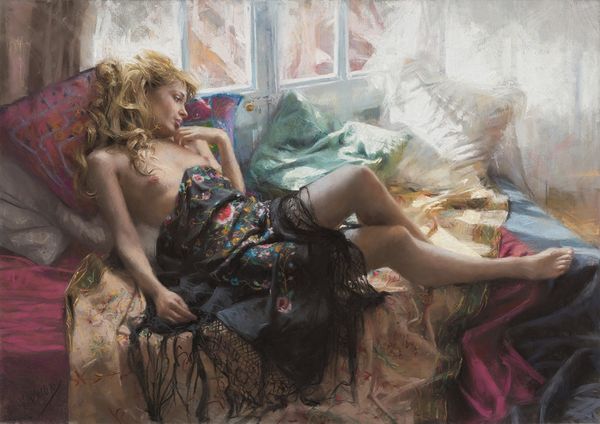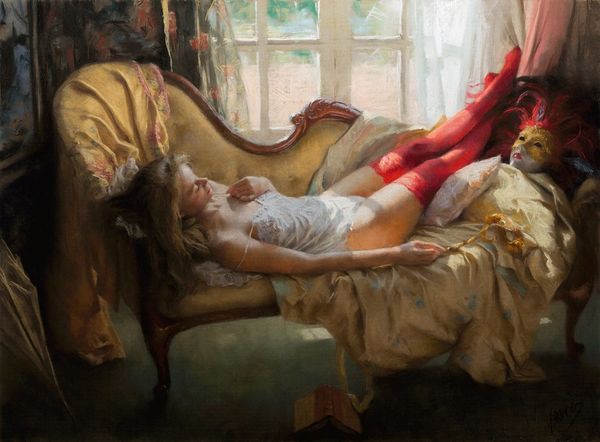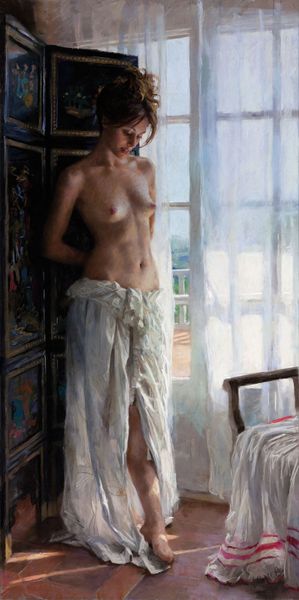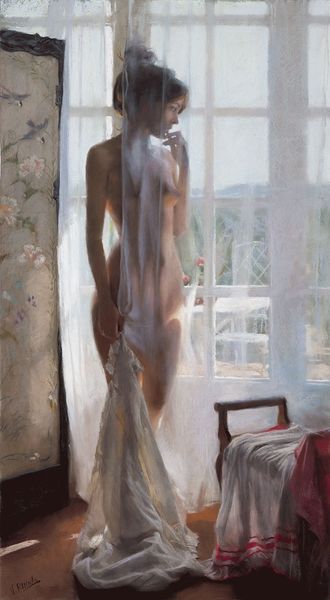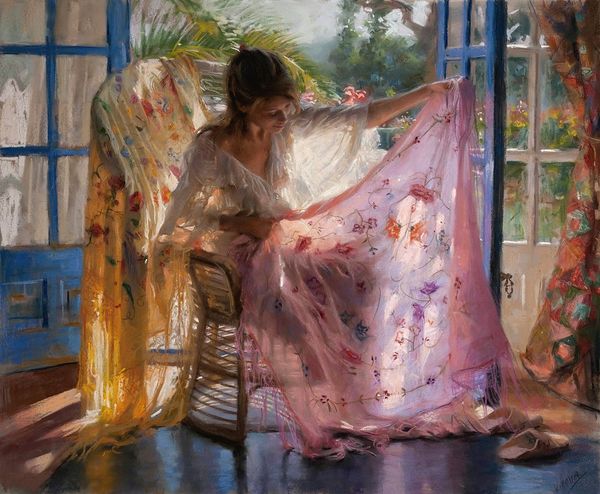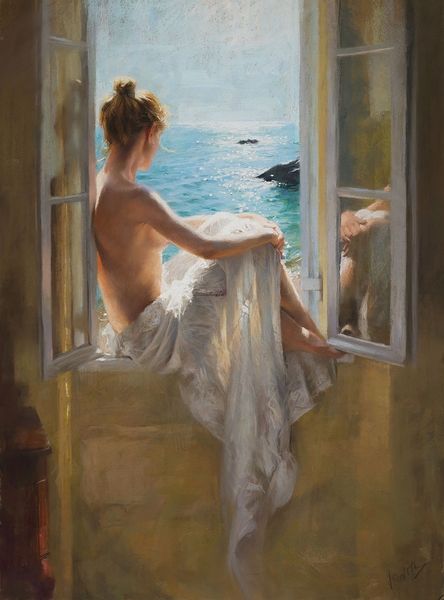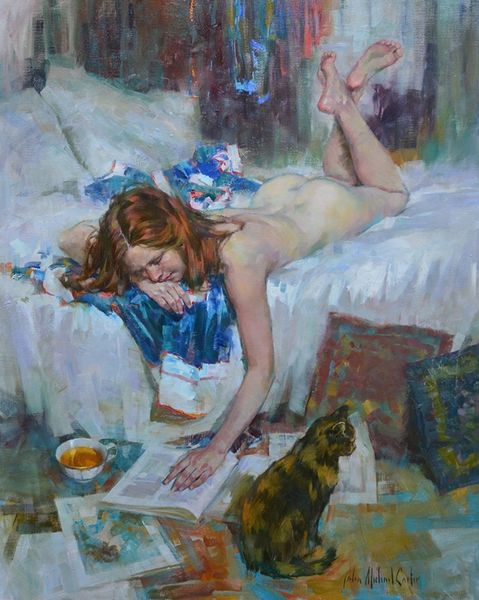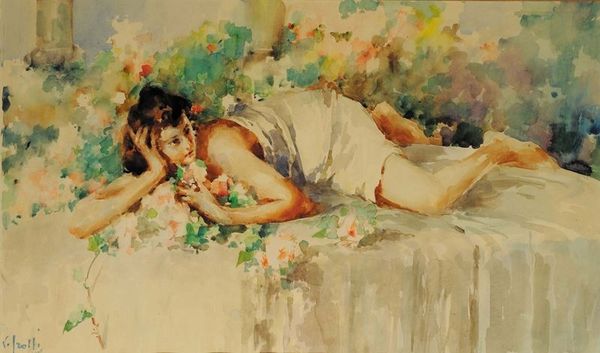
#
figurative
#
abstract painting
#
impressionist painting style
#
possibly oil pastel
#
oil painting
#
neo expressionist
#
acrylic on canvas
#
underpainting
#
painting painterly
#
animal drawing portrait
#
portrait art
Copyright: Modern Artists: Artvee
Editor: Here we have Vicente Romero's painting "Spanish Romance," its exact date is not listed. I find it a deeply sensual scene, and the textures of the fabrics are just captivating. What can you tell me about it? Curator: It’s interesting to think about how Romero uses material objects, like that intricately embroidered shawl, to communicate a particular kind of experience. He invites us to consider the value imbued in these mass produced or unique materials, not just for their beauty, but as signifiers of labor and perhaps even cultural identity. Look closely at the shawl. Editor: You’re right, the details in that shawl are amazing! I’d assumed they were merely decorative. Curator: Decoration always carries meaning. Think about where this shawl came from, how it was made, the hands that touched it before it arrived in the model's hands. That mass-produced object tells a story of industry, cultural exchange and probably also labor exploitation. Editor: I see your point. The way Romero uses painterly techniques, like visible brushstrokes, alongside this commercially available material, creates an interesting tension, right? Curator: Exactly. He elevates this everyday object –a material good – and places it at the center of his aesthetic expression. It questions our assumptions about fine art versus commercial goods and crafts, about where real artistry lies, the skill, labor and time implied. How do you read the material and social implications now? Editor: Now I can't stop thinking about the process! From the model's pose to the artist's strokes, the embroidered threads, the painting’s subject almost disappears behind the process. I never looked at representational painting that way. Curator: The beauty is undeniable. It is equally critical to be aware of how the artist utilizes and presents mass-produced materials and also engages art’s history of representation to address and reveal our present day context.
Comments
No comments
Be the first to comment and join the conversation on the ultimate creative platform.
